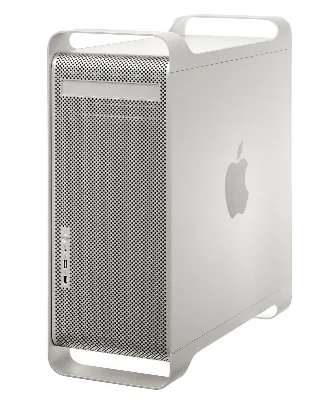With Apple’s recent announcements of the new iMac Pro, (and next year a redesigned Mac Pro) there are a lot of news stories being written about how Apple is trying to court professional users. This is the latest in a years long narrative about how Apple doesn’t care about creative professionals any longer. But is that actually the case or is there something else going on? Professional users are notoriously vocal and with good reason. These are computing’s superstars. All they really want is for their gear to be reliable and allow them to get as much work done as possible. And that is the reason many of them have used Apple systems for most of their careers.
Does the Macintosh platform still provide professional users with the speed and reliability that they need so much? Or has the platform abandoned them in favor of chasing the much larger consumer market? I’m going to attempt to answer that question, but first I want to give you a little background on my computing history. Also I’m focusing on video production because that’s the field I’m in, but the following should apply to any creative profession based on computers.
History
I love computers. Every since I first got to use a PC in grade school I was hooked on the promise that computing offers; The ability to create whatever you can dream up. Soon after, I got the chance to try out a Macintosh. It seemed like the machine was light years ahead of what a PC could do. The Mac had real speakers, real graphics and even a CD-ROM! When I finally convinced my parents to buy a computer they decided to get a Macintosh.
This was 1995 and Microsoft had just released their update to Windows that finally caught PC’s up with the Mac technologically. The next couple of years were a real challenge for Apple because they could no longer point to the Mac’s technical superiority alone to justify the premium price. They were in real decline by 1997 when Apple Computer, Inc bought Steve Jobs’ NeXT Inc. and he began to set things right.
An Apple Performa 550: my first Mac
By 2000 I was in college and trying to decide what I wanted to do for a career. I knew it would involve computers but my real passion, filmmaking seemed out of reach. Keep in mind that actual video workstations of this era cost well into six figures $USD. I decided to study computer networking and that’s when I really learned Windows and the PC platform's strengths and weaknesses. Around the same time, Apple came out with iMovie and the iMac DV, (for Digital Video). All of a sudden creating video was much less expensive. I quickly bought the iMac, a DV camera and started making videos. I ran into the limitations of iMovie almost immediately so I bought Final Cut Pro and started learning the program.
By the time I finished college, I had also become pretty good with Final Cut. I worked a couple of IT jobs out of college but quickly realized that it wasn’t for me. I liked information technology as an abstract concept but the reality of it; supporting Windows, was much more painful. I wanted to get back to using technology for it’s true purpose, creating the things I envisioned. So I got a job with a company that was transitioning from PC video workstations, (which by this point cost around $60,000-$80,000) to Macintoshes running Final Cut Pro that cost around $6000.
An Apple G5 tower
For the next few years everything was smooth as a Final Cut user. The program didn’t really change much and for the kind of editing I was doing it was perfect. Because of my background in tech, I became the facilities manager at my job. We were using the same large Mac towers connected to a SAN as everybody was at the time. It was such an ideal solution that I even bought a Mac Pro tower for my personal system at home. Then everything started happening. First HD video became the norm and then DSLRs started shooting video.
All of a sudden producers wanted their productions bigger, faster and done on location. Then they wanted seemingly every shot to have effects. Final Cut became a bottleneck. It struggled to handle the large frame sizes, complex codecs, and effects-heavy work being thrown at it. And forget editing on location. Final Cut needed as much power as it could get and laptops were out of the question. Everybody started wondering when Apple was going to do something.
Final Cut Pro X at launch in 2011
Flash forward to 2011 and Apple announces Final Cut Pro X, (10). It fixed all of the original program's flaws, (speed, memory usage, effects processing) but there was just one problem. Apple redesigned the entire interface. Editors lost their minds completely. The last thing anybody wanted to do was relearn how to run their software. The internet was full of bloggers openly lamenting that Apple had abandoned the professional user. They only got louder in 2013 when Apple announced the new-style Mac Pro cylinder with very little expandability.
I’ve gone on record that the cylinder Mac Pro is a fine machine that definitely has use cases where it shines. I’m very much in the minority with that opinion and that is born out by the sales of the system, (reportedly only a single-digit percentage of Mac sales). It’s taken until 2017 for Apple to finally come forward and admit that the cylinder Mac Pro didn’t live up to expectations. They blame this on the belief that software would be rewritten to take advantage of multiple GPUs. So they built a machine with multiple low-power GPUs instead of one high-powered GPU. To quote Craig Federighi, "[those] workloads didnt materialize to fit that as broadly as we hoped." To remedy this they are designing a new “modular” (their words not mine) Mac Pro for release in 2018. But is that really going to make the professional users happy?
Who is a professional user?
First of all we need to define the “Pro” user. As Michael Cioni pointed out in his excellent talk on the subject; there are "professional" users who work in a large collaborative environment with big budgets and big deadlines and then there are what he calls the “DIY” or “do-it-yourself-er”. These are freelancers or employees of small production shops. They are a much larger group than the collaborative professionals, (and louder!). I’ll add another group as well and that’s the hobbyists. Hobbyists are an important group because while they don’t do computer imaging professionally, they look up to the pros and the DIYs and take their advice on what to buy.
I have been in each of these groups at some point in my career. I started as a hobbyist, then moved into a professional collaborative environment, and a couple years ago I started my own business freelancing so now I’m decidedly in the DIY camp. Although they are doing similar work, these three groups have vastly different needs. The collaborative pro has the budget to buy whatever gear necessary to get the job done quickly. Every piece of gear is a tool and is treated as such. Apple never made a massive dent in this market and the reason is simple. These kind of facilities have the resources to hire IT departments to handle their computer setups, so they aren’t as concerned with Apple’s lauded ease of use. They also have the budgets to have extra gear on hand for when something goes wrong so reliability is less of a problem. These kind of places rely on companies like AVID, or Autodesk for their software, and get whatever hardware the IT department suggests.
By contrast the DIY editing/graphics market was huge for Apple in the 2000's. I will go so far as to say that they created it. As a DIY user, you usually only have the budget to buy one computer at a time so you have to make sure it’s the fastest and most reliable you can afford. You might also be using your work system as your personal computer as well. That combined with no real IT support meant Apple was the ideal solution. In the late 2000’s you could get an Apple workstation starting around $2500. That was cheaper by an order of magnitude than the competing solutions, (for real-time video at least). And you didn’t have to worry about the future because you could add cheap hard drives, memory or GPUs any time you wanted. The hobbyist market was really big as well, especially with the rise of platforms like YouTube. All of a sudden tons of people wanted to create videos and were looking to the pro and DIY users to help them get started.
The 2013 Mac Pro cylinder
Apple owned this market, until it didn’t. And I don’t believe for a second that it has anything to do with the kind of hardware Apple is making. It has everything to do with price. In the 2000’s you couldn’t get a PC that matched the power of the Mac Pro and Final Cut. With the release of Adobe Premiere’s Mercury render engine in 2011, (coincidentally at the same time Apple was launching Final Cut Pro X), cheap PCs could finally edit at a good enough level.
And that’s the real problem Apple has. You can get a capable Premiere system for considerably less than what Apple is offering. Yes it’s slower than Final Cut Pro X, (significantly slower) but the point is that you can get real work done. Also, Apple’s own consumer-grade hardware is becoming quite powerful in it’s own right and the number of cases that require workstation-level power are increasingly rare. All of this is conspiring to make it much harder to justify the cost of the Mac Pro.
Apple is the largest publicly traded company in the world, and they didn’t get there making poor-quality products. The popular narrative surrounding the company is the same narrative that has been pushed by the technology press since I was a child. Apple always makes “overpriced”, “underpowered” “non-professional” systems and they will be “pushed out of the market” anytime now. This notion has never been less true than today, but the press is going to keep repeating it as long as people keep believing it.
The truth is that creative professionals use Macintosh computers everyday, (including the cylinder Mac Pro) for all kinds of projects. The 2013 Mac Pro is not the badly designed system it’s made out to be. It runs very quick and very quiet. Especially with software designed to take advantage of the dual GPUs. Apple is going to build a replacement “modular" Mac Pro next year, but it will not be cheaper than a roll-your-own PC. My guess is that it will cost between $3,000 and $10,000, (same as current Mac Pro). “Professional users” (specifically DIYs & hobbyists) will not be happy with that price and they won't buy them. Bloggers will continue to lament that Apple “doesn’t get it” and Apple will continue to quietly own the world.
In my next article I will explain how it’s not the hardware that matters to your productivity. Instead its the software that enables us as editors and imaging professionals to get actual work done.
-Mario Colangelo





